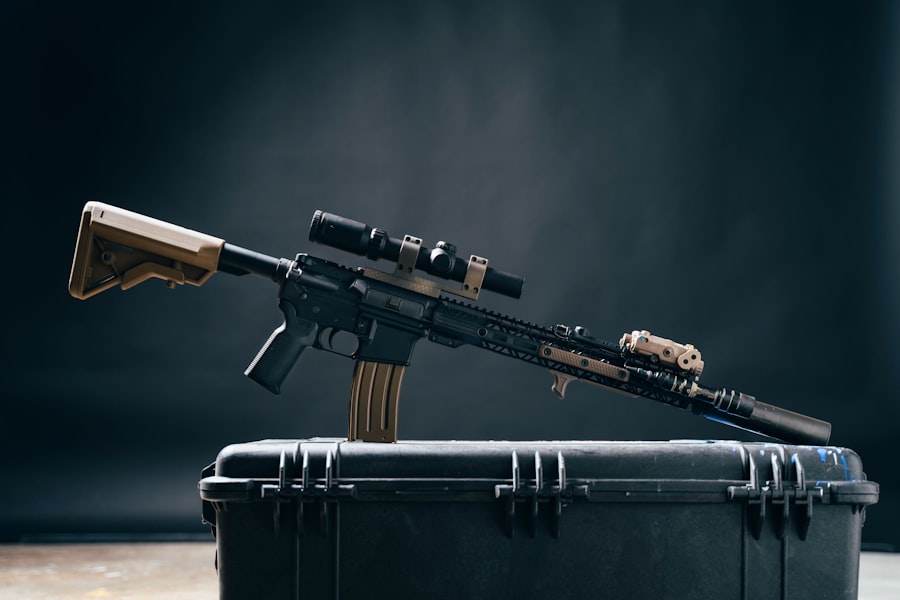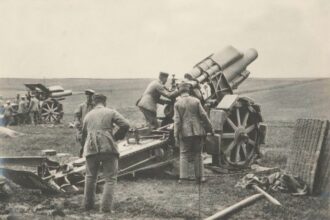In recent years, the military landscape has been marked by the development and procurement of increasingly sophisticated and costly weaponry. Nations around the globe have invested billions of dollars into advanced systems, believing that these high-tech solutions would provide them with a decisive edge in combat. However, the reality has often been starkly different.
Many of these expensive weapons have not only failed to deliver on their promises but have also exposed critical vulnerabilities in military operations. This paradox raises important questions about the efficacy of such investments and the underlying factors contributing to their shortcomings. The issue of expensive weapons falling short is multifaceted, encompassing a range of factors from technological limitations to organizational inefficiencies.
As military forces grapple with the complexities of modern warfare, it becomes evident that simply acquiring the latest technology does not guarantee success on the battlefield. Instead, a comprehensive understanding of the challenges associated with these systems is essential for ensuring that investments in defense yield tangible results. This article will explore various dimensions of this issue, shedding light on the reasons behind the failure of costly weaponry and suggesting pathways for improvement.
Key Takeaways
- Expensive weapons often fall short due to lack of proper testing and evaluation, leading to costly failures in the field.
- Over-reliance on new technology can result in expensive weapons being ineffective in real-world scenarios.
- Inadequate training and maintenance can lead to expensive weapons underperforming or malfunctioning when needed.
- Political and budgetary pressures can compromise the effectiveness of expensive weapons, leading to costly failures.
- Ineffective leadership and decision-making can contribute to the costly failure of expensive weapons.
Lack of proper testing and evaluation
One of the primary reasons expensive weapons often fall short is the lack of rigorous testing and evaluation before they are deployed. In many cases, defense contractors and military organizations rush to bring new technologies to market, driven by competitive pressures and the desire to showcase advancements. This haste can lead to inadequate assessments of a weapon’s performance, reliability, and suitability for real-world scenarios.
As a result, systems that are touted as cutting-edge may prove ineffective or even dangerous when faced with actual combat conditions. Moreover, the testing processes that do exist are sometimes compromised by political agendas or budgetary constraints. When decision-makers prioritize speed over thoroughness, they risk overlooking critical flaws that could jeopardize mission success.
The consequences of such oversights can be dire, as troops may find themselves relying on equipment that has not been properly vetted for operational use. This lack of due diligence not only undermines confidence in military capabilities but also raises ethical concerns about the safety and well-being of service members.
Over-reliance on new technology

The allure of new technology can lead military planners to place undue faith in advanced systems, often at the expense of traditional tactics and strategies. This over-reliance on cutting-edge weaponry can create a false sense of security, as commanders may assume that technological superiority alone will ensure victory. However, history has shown that wars are won not just through superior firepower but through effective strategy, adaptability, and understanding of the battlefield dynamics.
Additionally, an overemphasis on technology can result in neglecting other critical aspects of military readiness, such as logistics and personnel management. When resources are disproportionately allocated to developing and acquiring new systems, essential areas like troop training and support infrastructure may suffer. This imbalance can leave forces ill-prepared to leverage their advanced capabilities effectively, ultimately diminishing the potential advantages that new technologies were meant to provide.
Inadequate training and maintenance
| Training and Maintenance Metrics | 2018 | 2019 | 2020 |
|---|---|---|---|
| Number of reported incidents | 15 | 12 | 18 |
| Training hours provided | 500 | 550 | 600 |
| Equipment downtime (hours) | 200 | 180 | 250 |
Even the most advanced weaponry is rendered ineffective without proper training and maintenance. Unfortunately, many military organizations struggle to keep pace with the rapid evolution of technology, leading to gaps in personnel expertise and operational readiness. Service members may find themselves operating complex systems without sufficient understanding or experience, which can result in suboptimal performance during critical missions.
Moreover, maintenance protocols for expensive weapons systems can be cumbersome and resource-intensive.
This situation is particularly concerning given that many modern weapons rely on intricate software and hardware components that require regular updates and servicing.
Without a robust maintenance culture in place, even the most sophisticated systems can become liabilities rather than assets.
Political and budgetary pressures
Political dynamics and budgetary constraints play a significant role in shaping military procurement decisions. Often, defense budgets are influenced by external factors such as public opinion, lobbying from defense contractors, and geopolitical considerations. As a result, military leaders may feel pressured to prioritize certain programs or technologies that align with political agendas rather than focusing on what is genuinely needed for operational effectiveness.
These pressures can lead to a misallocation of resources, where funds are directed toward high-profile projects that may not deliver practical benefits on the battlefield. Additionally, budgetary limitations can hinder long-term planning and investment in essential areas such as research and development or personnel training. When financial considerations take precedence over strategic needs, the consequences can be detrimental to national security and military readiness.
Ineffective leadership and decision-making

Leadership within military organizations plays a crucial role in determining how effectively resources are allocated and how strategies are developed. Ineffective leadership can result in poor decision-making processes that fail to account for the complexities of modern warfare. When leaders prioritize personal agendas or fail to engage with frontline personnel who understand operational realities, they risk making choices that do not align with the needs of their forces.
Furthermore, a lack of accountability within leadership structures can perpetuate cycles of failure. When leaders are not held responsible for poor outcomes related to expensive weapons systems, there is little incentive to learn from mistakes or implement necessary changes. This culture can stifle innovation and discourage open dialogue about shortcomings in military capabilities, ultimately hindering progress toward more effective solutions.
Complexity and integration challenges
The increasing complexity of modern weapons systems presents significant challenges for military organizations seeking to integrate these technologies into their operations. Many advanced systems are designed with intricate software and hardware components that require seamless interoperability with existing platforms. However, achieving this level of integration is often fraught with difficulties, as different systems may not communicate effectively or may require extensive modifications to work together.
These integration challenges can lead to operational inefficiencies and increased vulnerability on the battlefield. When forces are unable to leverage their advanced capabilities due to compatibility issues or technical glitches, they may find themselves at a disadvantage against adversaries who can exploit these weaknesses. Addressing these complexities requires a concerted effort from military leaders to prioritize interoperability during the design and procurement phases of weapon systems.
Changing threat environments
The nature of warfare is constantly evolving, with new threats emerging as geopolitical landscapes shift and technology advances. Expensive weapons systems that were once considered state-of-the-art may quickly become obsolete in the face of evolving adversarial tactics or capabilities. This reality underscores the importance of adaptability within military organizations; however, many forces struggle to keep pace with these changes.
When military planners fail to anticipate shifts in threat environments, they risk investing heavily in systems that do not align with current or future operational needs. This misalignment can lead to wasted resources and diminished effectiveness on the battlefield. To remain relevant in an ever-changing landscape, military organizations must adopt a proactive approach to threat assessment and ensure that their investments reflect an understanding of emerging challenges.
Inadequate communication and coordination
Effective communication and coordination are essential components of successful military operations. However, many organizations face significant barriers in these areas, particularly when it comes to integrating new technologies into existing frameworks. Poor communication can lead to misunderstandings about capabilities or limitations associated with expensive weapons systems, resulting in suboptimal deployment strategies.
Additionally, inadequate coordination between different branches of the military or between allied forces can exacerbate these challenges. When units operate in silos without sharing information or resources effectively, they may miss opportunities to leverage their collective strengths. This lack of cohesion can undermine the potential advantages offered by advanced weaponry and hinder overall mission success.
Failure to learn from past mistakes
History is replete with examples of military organizations failing to learn from past mistakes regarding expensive weapons systems. Time and again, lessons from previous conflicts or procurement failures have been overlooked or forgotten as new technologies emerge. This failure to reflect on historical experiences can lead to repeated errors in judgment and decision-making.
To break this cycle, military leaders must cultivate a culture of learning within their organizations. By encouraging open dialogue about past failures and successes, they can foster an environment where innovation thrives and lessons are applied to future endeavors. Emphasizing continuous improvement will not only enhance operational effectiveness but also ensure that investments in expensive weapons yield meaningful results.
Addressing the costly failure of expensive weapons
The issue of expensive weapons falling short is a complex challenge that requires a multifaceted approach to address effectively. By recognizing the various factors contributing to this phenomenon—such as inadequate testing, over-reliance on technology, insufficient training, political pressures, ineffective leadership, integration challenges, changing threat environments, poor communication, and failure to learn from past mistakes—military organizations can begin to implement meaningful reforms. Ultimately, addressing these issues will require a commitment to prioritizing operational effectiveness over political expediency or technological allure.
By fostering a culture of accountability, adaptability, and continuous learning within military organizations, leaders can ensure that investments in defense translate into tangible benefits on the battlefield. Only through such concerted efforts can nations hope to navigate the complexities of modern warfare successfully while maximizing the potential advantages offered by advanced weaponry.
In the complex world of military technology, the failure of expensive weapons systems often raises questions about the balance between cost and effectiveness. An insightful article titled “Why Expensive Weapons Fail” delves into the intricacies of this issue, exploring how high costs do not always equate to superior performance. For a broader perspective on military strategies and the challenges faced in modern warfare, you might find it beneficial to explore related discussions on In The War Room. This platform offers a wealth of information on various aspects of military operations, providing a comprehensive understanding of the factors that contribute to the success or failure of advanced weaponry.
FAQs
What are some reasons why expensive weapons fail?
Some reasons why expensive weapons fail include technical malfunctions, inadequate testing, poor maintenance, and ineffective design.
How does inadequate testing contribute to the failure of expensive weapons?
Inadequate testing can lead to the failure of expensive weapons by not uncovering potential flaws or weaknesses in the weapon’s design or functionality before it is deployed in real-world situations.
What role does poor maintenance play in the failure of expensive weapons?
Poor maintenance can contribute to the failure of expensive weapons by causing mechanical issues, reducing the weapon’s effectiveness, and increasing the likelihood of malfunctions during use.
How can ineffective design lead to the failure of expensive weapons?
Ineffective design can lead to the failure of expensive weapons by creating vulnerabilities, limitations, or weaknesses that compromise the weapon’s performance and reliability in combat or other operational scenarios.
What impact do technical malfunctions have on the failure of expensive weapons?
Technical malfunctions can significantly impact the failure of expensive weapons by rendering them inoperable, reducing their effectiveness, and potentially endangering the lives of military personnel or civilians.




